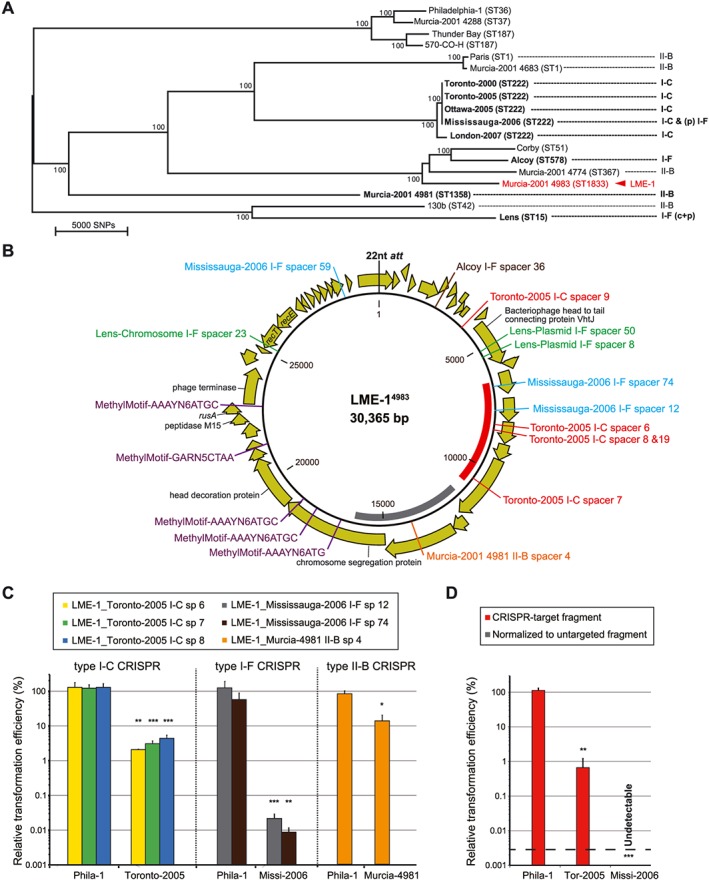Figure 4.

Multiple Legionella pneumophila CRISPR‐Cas systems target the same 30 kb sequence element.
A. CRISPR‐Cas systems are widespread in L. pneumophila. Shown is the core genome‐based neighbour‐joining phylogenetic tree of previously published L. pneumophila genomes and ten genomes newly sequenced in this study. The sequence type of each strain is given, with the CRISPR‐Cas system(s) in each strain indicated as well. Note that the environmental strain L. pneumophila str. Murcia‐4983 harbours a 30 kb element (LME‐1) that is targeted by multiple L. pneumophila CRISPR‐Cas systems (highlighted in bold).
B. Several L. pneumophila CRISPR‐Cas systems target LME‐14983, often using multiple spacers. The element is 30 365 bp in length and contains 41 ORFs predicted by Prokka (Seemann, 2014). Similar to an orthologous element previously described in L. pneumophila str. RC1 (Luneberg et al., 2001), LME‐14983 contains proteins related to bacteriophage and DNA recombination. Highlighted are the sequences targeted by L. pneumophila CRISPR spacers (and the Toronto‐2005 type I R‐M systems).
C. Distinct L. pneumophila CRISPR‐Cas systems protect against individual protospacers in LME‐14983. Plasmids containing indicated sequences (with flanking tri‐nucleotides) from LME‐14983 were electroporated into the indicated strains. The relative transformation efficiency was calculated by normalizing to the transformation efficiency of the control plasmid that contains an untargeted sequence.
D. The type I‐C and type I‐F CRISPR‐Cas systems in L. pneumophila ST222 strains protect against transformation of LME‐1 fragments. Plasmids containing ~4.5 kb LME‐1 fragments colour coded in B were electroporated into the indicated strains. The relative transformation efficiencies of the CRISPR‐target fragment were calculated by normalizing to that of the untargeted control fragment (grey). Note that L. pneumophila str. Mississauga‐2006 has an extra type I‐F CRISPR‐Cas system relative to L. pneumophila str. Toronto‐2005. Error bars indicate the standard error of the mean of three biological replicates. *P < 0.05, **P < 0.01, ***P < 0.001, according to Student's t‐test against L. pneumophila str. Philadephila‐1 relative transformation efficiencies.
